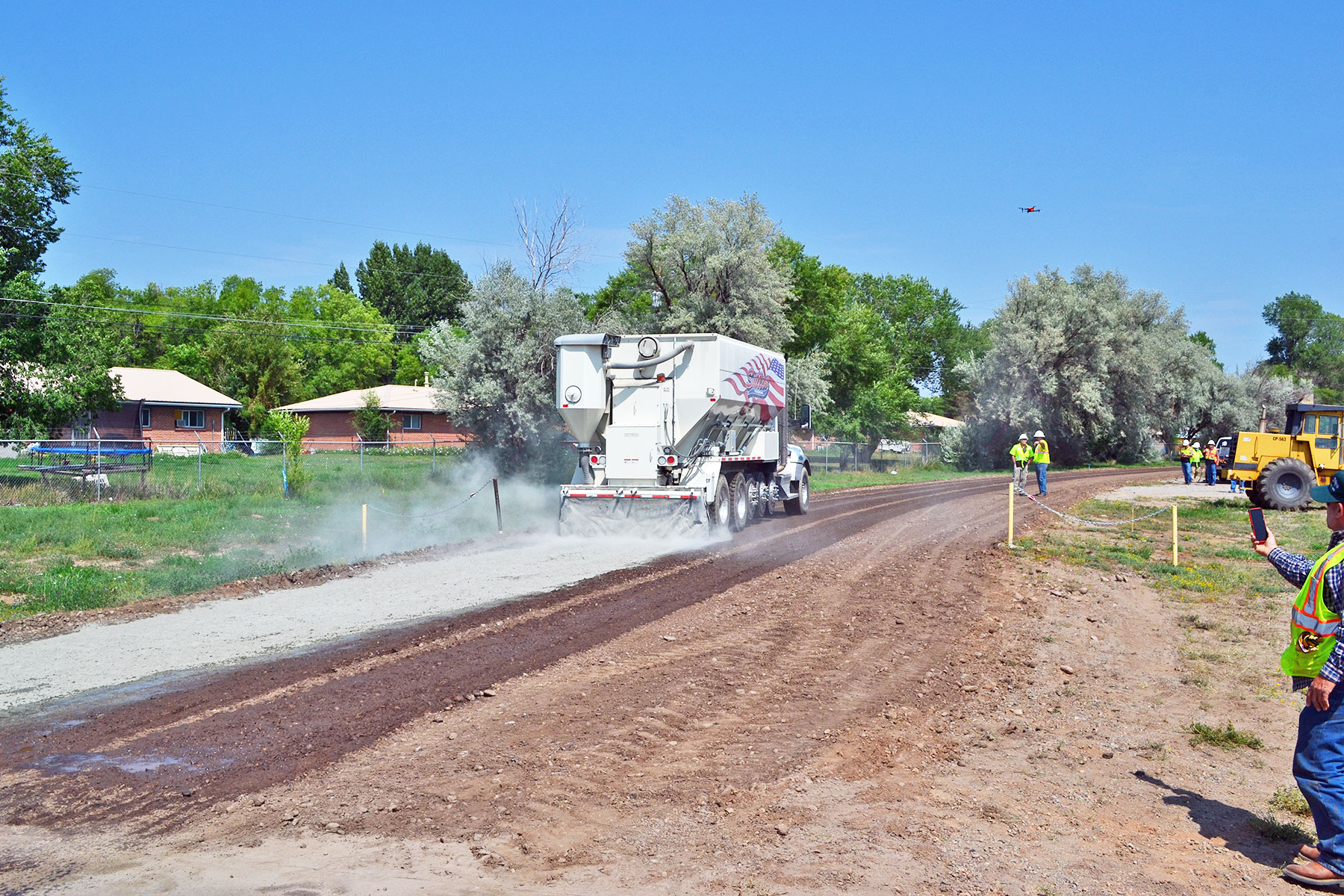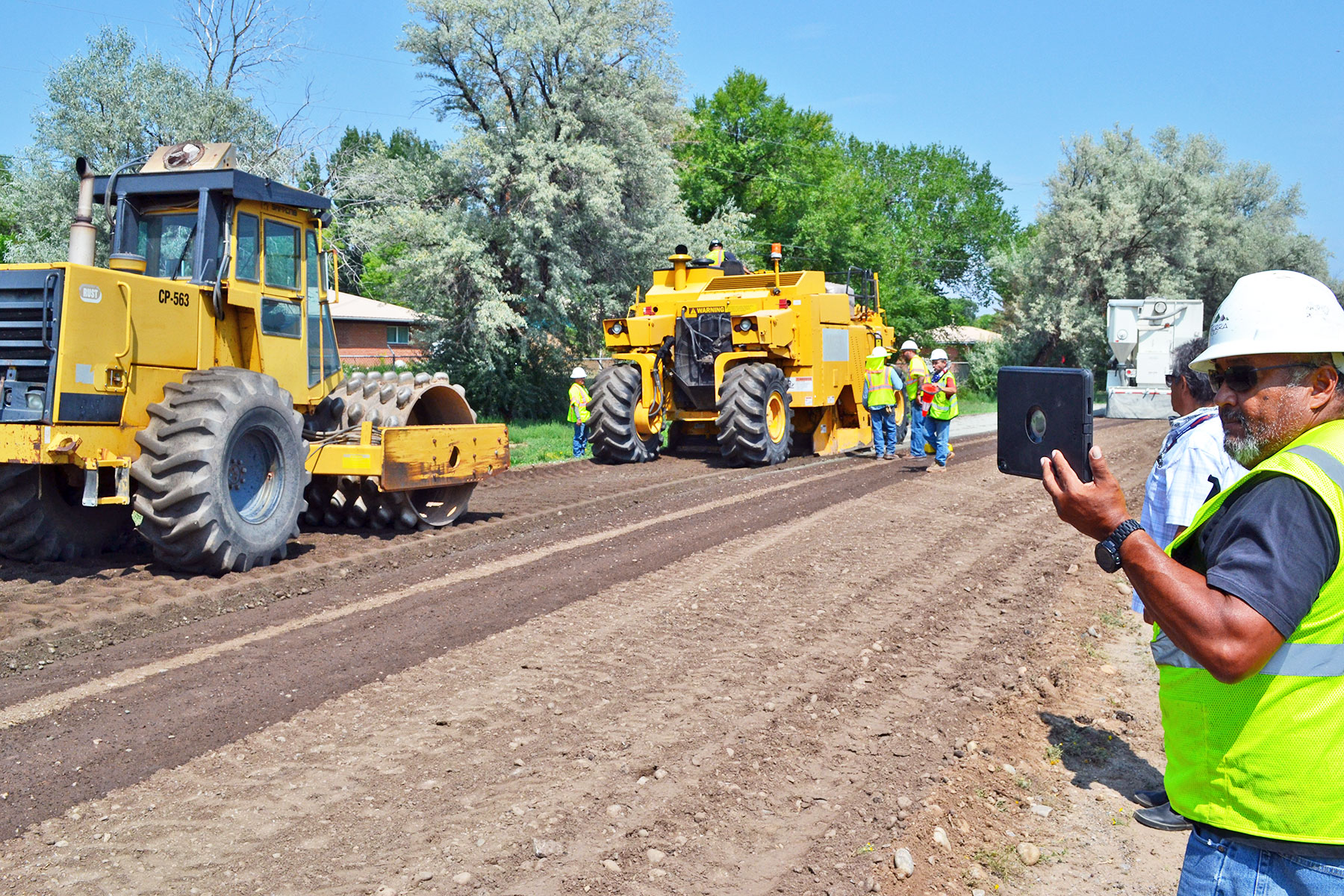On a one-half mile stretch of roadway on the Southern Ute Fairgrounds in Ignacio, Colo., various Tribal officials, including Tribal elected officials, employees from the Construction and Projects Department, company representatives, and others were on hand to witness a unique road rebuild and stabilization process, Wednesday, Aug. 18.
Approximately three dozen people were present to witness the roadbuilding, many taking photographs. Walter Fuqua, company operations consultant and liaison, filmed the road-making process.
Both the process and the company name are called Lithified Technologies, or Lith Tech for short. The company has been around for 11 years. Photographs of a Lith Tech road near Monticello, Utah show it to be in excellent condition after four years. This process appears to be a possible game-changer in the repair and rebuilding of roads, including the construction of entirely new roads as well. In the case here in Ignacio, compared to traditional methods, this road is being rebuilt and repaired faster, will last longer, at significantly lower costs, with no damage to the environment. And it can be replicated with essentially any roadway in need of repair.
We all know the saying, “too good to be true.” In this case, it appears there is a good chance that it is true, with plenty of scientific studies, empirical evidence, and real-life experience to back it up.
Every level of government that has anything to do with road repair or road building should explore this unique and even enlightened approach and process of re-making a roadway. Lith Tech appears to be able to do more with less. Something to consider in these lean budget times. Statistically, there are simply more failing roads than there are funds to rebuild them.
We all know what excessive road-wear can look like: deep cracks, uneven pavement, potholes, and crumbling edges. As they say in the roadbuilding industry, “Roads wear from the top but fail from the bottom.” One can get a sense of load bearing and fatigue issues with roadways by understanding what the CEO of Lithified Technologies U.S., Bob Sherwin, has to say: “Just one 40-ton truck on a road has the same effect as 10,000 cars rolling down the pavement.”
Therefore, what is key in all of this is what is below the road surface, called base course, which is traditionally sand and gravel, often mixed with lime or cement, then ultimately paved over with asphalt, cement, or chip seal. This road at the fairgrounds will have a chip seal surface.
With Lith Tech — everything is in play, all road materials already present, surface, base course, and everything in between will all be part of the new Lith Tech mix of materials. No hauling existing asphalt away, since it is all recycled in an optimal mix as determined by a geo-technical study for that specific road locale. And it only takes 24 hours total time to completely harden and cure, which means that it is drivable in hours instead of the several days that traditional methods require. According to Bob Perry, former Public Works Director for Archuleta County, and currently a technical advisor for Lith Tech, that the Lith Tech base below the road surface is as hard as concrete but seven times more flexible, meaning it can take lots of weight, stress, and strain by traffic, but will hold its shape and not deteriorate. In different words, it is extremely hard, but not brittle.
Rigorous scientific and engineering studies have confirmed the many positive aspects of the Lith Tech process. From the company literature, these are many key advantages when compared to traditional road repair, rebuilding, or new road construction.




